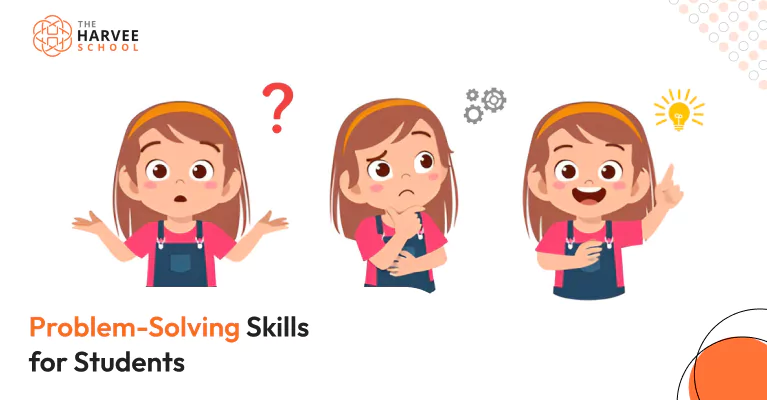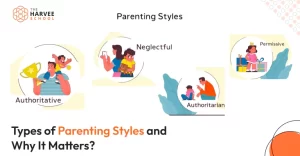Problem-Solving Skills for Students
In today’s fast-paced and competitive world, problem-solving skills have become an essential asset for students. These skills not only help in overcoming academic challenges but also prepare students to tackle real-life situations with confidence. The ability to identify problems, analyze them, and find effective solutions can significantly impact a student’s academic performance and personal growth.
In this comprehensive guide, we will explore the importance of problem-solving skills for students, effective strategies to develop them, common challenges faced, and how parents and teachers can support this learning journey. By the end of this article, you will be equipped with actionable tips to enhance your problem-solving abilities effectively.
Why Problem-Solving Skills Matter for Students?
Problem-solving skills are more than just an academic requirement; they are life skills that empower students to handle challenges both in and outside the classroom. Here are a few reasons why they are crucial:
Boosts Critical Thinking: Problem-solving encourages students to think logically and critically, enabling them to analyze situations thoroughly before making decisions.
Enhances Decision-Making: Effective problem-solvers can weigh different options and choose the most feasible solutions quickly.
Improves Academic Performance: Students with strong problem-solving skills can grasp complex subjects better, leading to improved grades.
Promotes Independence: Being able to resolve problems independently builds confidence and self-reliance.
Key Problem-Solving Skills Every Student Needs
To become proficient at problem-solving, students need to develop a specific set of skills:
Analytical Thinking: The ability to break down complex problems into manageable parts and analyze them effectively.
Creativity: Fosters innovative thinking to develop unique and effective solutions.
Research Skills: Finding and evaluating information critically to support solutions.
Emotional Intelligence: Managing emotions and staying calm under pressure helps in making rational decisions.
Decision-Making: The capability to choose the best course of action based on available information.
Effective Strategies to Enhance Problem-Solving Skills
1. Encourage Critical Thinking
Ask Open-Ended Questions: Stimulate deeper thinking by asking questions that begin with “how” and “why.” For example, instead of asking, “Did you like the story?” ask, “Why do you think the character made that choice?”
Socratic Method: Engage in a series of thought-provoking questions that lead students to their own conclusions. This method fosters independent thinking and reasoned arguments.
2. Use Real-World Problems
Incorporating real-life scenarios into learning makes problem-solving more relatable and practical for students.
Community Projects: Encourage students to solve local issues, such as reducing waste or organizing events. This not only makes learning engaging but also instills a sense of responsibility.
Case Studies: Present students with real-world business or scientific dilemmas to solve, which helps them apply theoretical knowledge practically.
3. Practice Mind Mapping
Mind mapping is a powerful tool for visualizing problems and organizing thoughts logically.
How to Use: Start with a central problem and branch out potential solutions and their consequences. This technique helps in breaking down complex issues into manageable parts.
Benefits: Enhances memory retention, improves focus, and facilitates a structured approach to problem-solving.
4. Embrace Collaborative Learning
Group activities can significantly boost problem-solving skills by bringing diverse perspectives to the table.
Brainstorming Sessions: Encourage students to work in teams to generate multiple solutions for a problem without immediate judgment.
Peer Reviews: Getting feedback from classmates helps students refine their solutions and learn from different viewpoints.
5. Incorporate Games and Simulations
Games can be a fun yet effective way to develop problem-solving skills.
Strategy-Based Games: Games like chess, Minecraft, and escape rooms encourage strategic thinking and planning.
Simulations: Role-playing scenarios, such as managing a business or solving a crisis, help students apply their problem-solving skills in a controlled environment.
Common Challenges in Problem-Solving for Students
Despite the benefits, students often face several challenges in developing problem-solving skills:
Fear of Failure: Many students avoid tackling complex problems due to the fear of making mistakes. This mindset restricts their willingness to take risks and learn from failures.
Over-Reliance on Memorization: A focus on rote learning limits the ability to think critically and solve problems creatively.
Lack of Resources: Insufficient access to information and tools can impede effective problem-solving.
Impatience: The tendency to seek quick solutions without proper analysis leads to ineffective results.
Overcoming Challenges: Practical Tips
Adopt a Growth Mindset: Encourage students to view challenges as opportunities for learning rather than obstacles. Praising effort over results fosters resilience.
Teach Time Management: Efficient time management helps students dedicate sufficient time to analyze and solve problems thoroughly.
Provide Constructive Feedback: Focus feedback on the strategies used rather than just the outcome to help students refine their approach.
How Parents and Teachers Can Support Problem-Solving Skills?
Create a Safe Learning Environment: Encourage students to experiment and make mistakes without fear of judgment.
Model Problem-Solving Behavior: Demonstrate how to approach problems methodically by thinking aloud.
Incorporate Real-Life Learning: Activities like cooking, budgeting, or planning trips can enhance problem-solving in practical contexts.
Encourage Reflective Thinking: After solving a problem, ask students to reflect on what worked, what didn’t, and how they can improve.
Measuring Improvement in Problem-Solving Skills
Regular Assessments: Use quizzes and scenario-based questions to gauge progress.
Self-Evaluation: Encourage students to self-assess their problem-solving process to identify areas for improvement.
Feedback Sessions: Regular feedback from teachers and peers can help students refine their skills.
Conclusion
Mastering problem-solving skills is a vital part of a student’s educational journey. By focusing on developing critical thinking, creativity, and practical strategies, students can become confident problem solvers. Parents and teachers play a significant role in fostering these skills by creating a supportive and engaging learning environment.
Incorporate these strategies into your learning routine today, and watch as your problem-solving abilities flourish. With persistence and the right approach, every student can become an expert problem solver!






